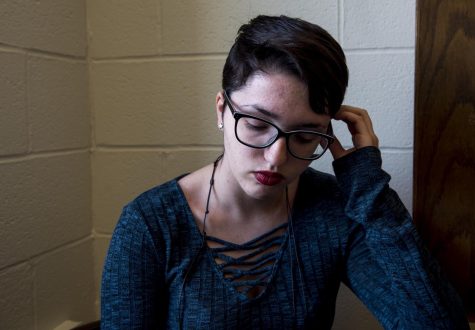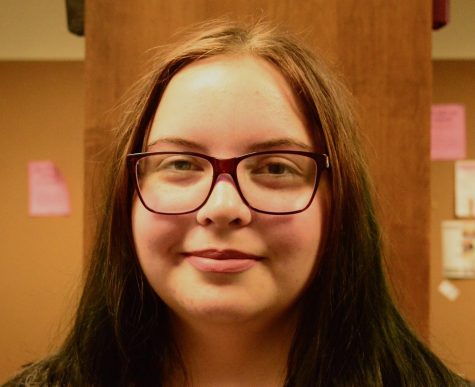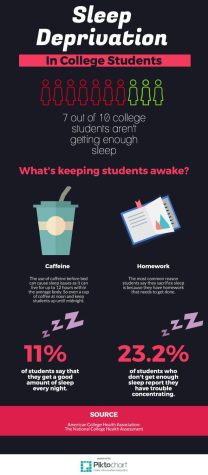Kent State sees boost in mental health services
April 30, 2017
Kent State is expanding mental health services to meet demand that has almost doubled in six years.
The university upgraded a temporary part-time psychologist at University Psychological Services to full-time this semester. It plans to add two more psychologists in the fall to the current six on staff according to Shay Little, vice president for student affairs.
The department is also adding a licensed counselor and a case manager to coordinate referrals to outside professionals.
A 24-hour mental health hotline run by an outside agency will go online in fall. It will serve both the Kent and regional campuses, and the university is studying how to increase mental health services for regional students, Little said.
The move is in response to a caseload at University Psychological Services that has gone from 573 in 2010-11 to 1,025 last year, the most recent number available. The increase in demand has led to waiting times for students seeking help that can range from two weeks to four months.
The mental health project is part of the “Kent State of Wellness” initiative championed by President Beverly Warren.
“Our vision is to become the healthiest campus in the country,” Little said. “And how can we do that without adding more to our mental health services.”
The increased demand reflects national trends. According to the Center for Collegiate Mental Health, the average level of counseling center use grew by 30 percent nationally between 2015 and 2016 alone.
“Our society is very on-demand every second of the day,” said Pamela Farer-Singleton, chief psychologist of University Psychological Services. “We have very difficult lives because we’re meeting other people’s demands all the time, whether that’s your cell phone or responding to other people’s requests.”
Jason Miller, director of the Counseling and Human Development Center in White Hall, said some students are also pursuing psychological services may not have been taught coping skills.
“I think some of the parenting methods students experienced as children is why the resilience is low,” he said. “Students generally nowadays struggle with the ability to problem-solve effectively. So when you don’t know how to problem solve, and you can’t form and find a solution, suicide seems like the best option. Mix anxiety in with it and you have a problem.”
Miller said students are also more willing to seek help than previous generations.
“The stigma of mental health on campus has worn away,” Miller said. “It’s still there, but not as much as 10 years ago. Back then it may have been a little weird to admit that you were seeing a psychologist.”
Many students also come to campus seeking to continue treatment they started at home, Farer-Singleton said. Parents expect universities to continue that care.
“Students are dealing with mental health concerns as adolescents,” Farer-Singleton said. “So there is not the same challenge of educating them to get help. So many of our students we’re seeing have already received services prior to coming to the university.”
Kent State students most commonly seek help for anxiety, depression, low self-esteem and relationship and family problems, according to a database of diagnoses kept by all of the university’s mental health services.
In recent years, anxiety has passed depression, which was once the most common mental health problem on campus. This past year, anxiety was listed by 69.5 percent of students seeking help, according to Miller. Nationally, 85 percent of all students report they have felt overwhelmed at one point in their college careers, according to the Anxiety and Depression Association of America.
The association says that much of college students’ anxiety comes from trying to balance school, work, friends and family while trying to figure out the rest of their lives. Other factors like student loan debt are contributors, an association study found.
The impetus came as administrators prepared for Warren’s healthy campus initiative, which was announced in her first State of the University speech in November 2015.
The previous summer student affairs administrators made contact with the Jed Foundation, a non-profit organization based out of New York that promotes emotional health for young adults. JED works with more than 100 U.S. colleges to create four-year plans to help combat student suicide, fight substance abuse and improve emotional health.
Kent State paid the foundation $8,000 to assess its current programs and create a plan, Little said. Kent State started with a task force that included representatives from departments like conduct court, athletics, student affairs, psychological services and the College of Education and Human Services. There was an overall committee and separate committees for main and regional campuses.
The committee then did a 128-question self-assessment student about the state of Kent State’s mental health promotion, psychological counseling, substance-abuse and suicide-prevention programming. Questions ranged from the number of counselors to whether students had access to places where they might be able to hurt themselves, such as the roofs of buildings.
After the assessment, the teams met in Kent and at Stark campus with Nance Roy, director of Jed’s campus programs.
“What we’re really trying to do is make mental health a public health approach,” Roy said. “These issues cannot fall primarily on health services. It is a campus-wide responsibility that will not work without support from the top down.”
Key recommendations from Jed were the increase in counseling resources and greater promotion of mental health services. Part of that promotion has been increased emphasis on Kent State’s “Step Up Speak Out” program, which provides information to students, staff and faculty on how to find help for themselves and other students.
The new mental health initiative will be funded by redirecting fund from existing University Health Services accounts. These “leftover” funds are typically from the result of employee positions not being filled, or programs and services coming in under its projected budget, Little said.
Editor’s note: This story is part of a student media project entitled “The Silent Struggle.” See the whole project here.
Rachel Duthie is the student life reporter, contact her at [email protected].























